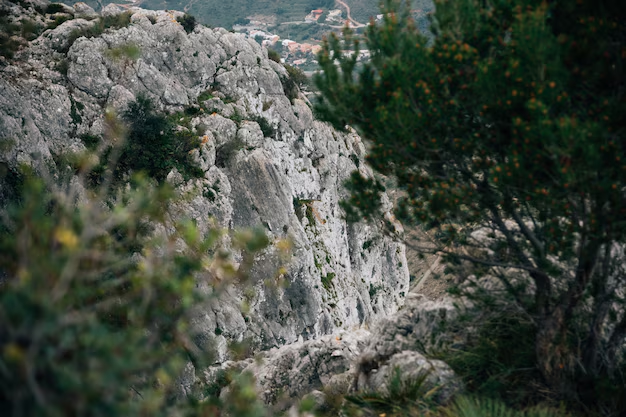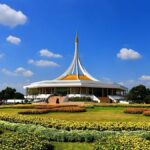The Cantabrian Mountains are a captivating range in northern Spain, stretching over 300 kilometers and offering a diverse blend of nature, wildlife, culture, and adventure. Known for their rugged peaks, lush forests, and unique biodiversity, these mountains are a paradise for nature enthusiasts, hikers, and anyone looking to explore a lesser-known gem of Europe. In this article, we delve into what makes the Cantabrian Mountains known for their distinct allure and significance.
Rich Biodiversity and Endemic Species
The Cantabrian Mountains are home to a rich array of flora and fauna, making them a hotspot for biodiversity in Europe. The range is particularly famous for its population of the endangered Cantabrian brown bear. These bears, found in the western parts of the mountains, symbolize the region’s dedication to wildlife conservation. Other notable species include the Iberian wolf, Cantabrian chamois, and a variety of bird species such as the golden eagle and capercaillie.
Botanically, the mountains boast diverse ecosystems, from oak and beech forests to alpine meadows. Many endemic plant species thrive here, benefiting from the varied microclimates created by the range’s altitude and geography. Nature lovers often visit to explore these habitats and witness the incredible biodiversity firsthand.
Stunning Landscapes and Geological Wonders
The Cantabrian Mountains are renowned for their breathtaking landscapes. From jagged limestone peaks to deep valleys and glacial lakes, the scenery is nothing short of spectacular. The Picos de Europa National Park, located within this range, is particularly famous for its dramatic cliffs and lush greenery.
Geologically, the mountains are a treasure trove. The karst formations, with their caves and sinkholes, attract geologists and adventure seekers alike. Cueva de El Soplao, a stunning cave system, is a must-visit for its fascinating stalactites and stalagmites.
Cultural and Historical Significance
Beyond their natural beauty, the Cantabrian Mountains are steeped in history and culture. The range has been inhabited for thousands of years, as evidenced by prehistoric cave paintings like those found in the Cave of Altamira, a UNESCO World Heritage Site. These artworks provide a glimpse into early human life and are a significant cultural treasure.
Traditional villages dot the landscape, where ancient customs and local crafts are preserved. The region’s inhabitants are known for their warm hospitality and vibrant festivals, offering visitors a chance to experience authentic Spanish culture.
Adventure and Outdoor Activities
The Cantabrian Mountains are a haven for adventure enthusiasts. Hiking is one of the most popular activities, with numerous trails catering to all levels of expertise. The Ruta del Cares, often called “The Divine Gorge,” is a spectacular trail that takes you through breathtaking landscapes and alongside steep cliffs.
Other outdoor activities include rock climbing, mountain biking, and skiing during the winter months. The rivers and streams in the region also offer opportunities for kayaking and fishing, making the Cantabrian Mountains a year-round destination for outdoor adventures.
Unique Gastronomy and Culinary Delights
The Cantabrian Mountains are known for their rich culinary traditions. The region’s cuisine is heavily influenced by its natural surroundings, featuring ingredients like fresh game, wild mushrooms, and mountain herbs. Local dishes such as cocido montañés, a hearty stew, and various cured meats are a must-try for food enthusiasts.
Cheese lovers will find a haven in the Cantabrian Mountains, as the area is renowned for its artisanal cheeses. Cabrales, a blue cheese aged in limestone caves, is one of the most famous varieties and pairs beautifully with local wines and ciders.
Conservation Efforts and Ecotourism
Conservation plays a vital role in preserving the unique ecosystems of the Cantabrian Mountains. Efforts to protect endangered species, such as the Cantabrian brown bear, are ongoing and have seen significant success in recent years.
Ecotourism initiatives are also gaining traction, promoting sustainable travel practices that benefit both the environment and local communities. Visitors are encouraged to explore responsibly, ensuring the natural beauty and cultural heritage of the region remain intact for future generations.
Seasonal Highlights
Each season in the Cantabrian Mountains offers something unique. Spring brings blooming flowers and active wildlife, making it an excellent time for hiking and birdwatching. Summer’s warm weather is perfect for exploring high-altitude trails and enjoying outdoor festivals.
Autumn transforms the landscape into a palette of vibrant colors, creating a picturesque setting for photography and leisurely walks. Winter, on the other hand, turns the mountains into a snowy wonderland, ideal for skiing and other winter sports.
Accessibility and Travel Tips
Reaching the Cantabrian Mountains is relatively easy, with major cities like Oviedo, Santander, and Bilbao serving as gateways to the region. Well-maintained roads and public transport options make it convenient for travelers to access the area.
For those planning a visit, it’s advisable to pack appropriate clothing and gear based on the season and planned activities. Guided tours are available for those looking to delve deeper into the region’s natural and cultural heritage, ensuring a well-rounded and enriching experience.
Conclusion
The Cantabrian Mountains are a treasure trove of natural beauty, cultural heritage, and adventure. Known for their biodiversity, stunning landscapes, and rich traditions, they offer something for everyone, from nature lovers and history enthusiasts to thrill-seekers and foodies. A visit to this enchanting mountain range is an unforgettable experience, showcasing the best of Spain’s northern charm.
FAQs
What are the Cantabrian Mountains known for?
The Cantabrian Mountains are known for their stunning landscapes, rich biodiversity, cultural heritage, and outdoor activities like hiking and skiing.
Where are the Cantabrian Mountains located?
The Cantabrian Mountains are located in northern Spain, stretching across several regions, including Asturias, Cantabria, and Castilla y León.
What wildlife can be found in the Cantabrian Mountains?
The mountains are home to diverse wildlife, including the Cantabrian brown bear, Iberian wolf, golden eagle, and various endemic species.
Are there any famous hiking trails in the Cantabrian Mountains?
Yes, the Ruta del Cares is one of the most famous trails, offering breathtaking views and a memorable hiking experience.
What is the best time to visit the Cantabrian Mountains?
The best time depends on your interests. Spring and autumn are ideal for hiking and photography, while winter is perfect for skiing and snow activities.
What cultural sites can be visited in the Cantabrian Mountains?
Cultural sites include the Cave of Altamira, with its prehistoric paintings, and traditional villages preserving ancient customs and crafts.







